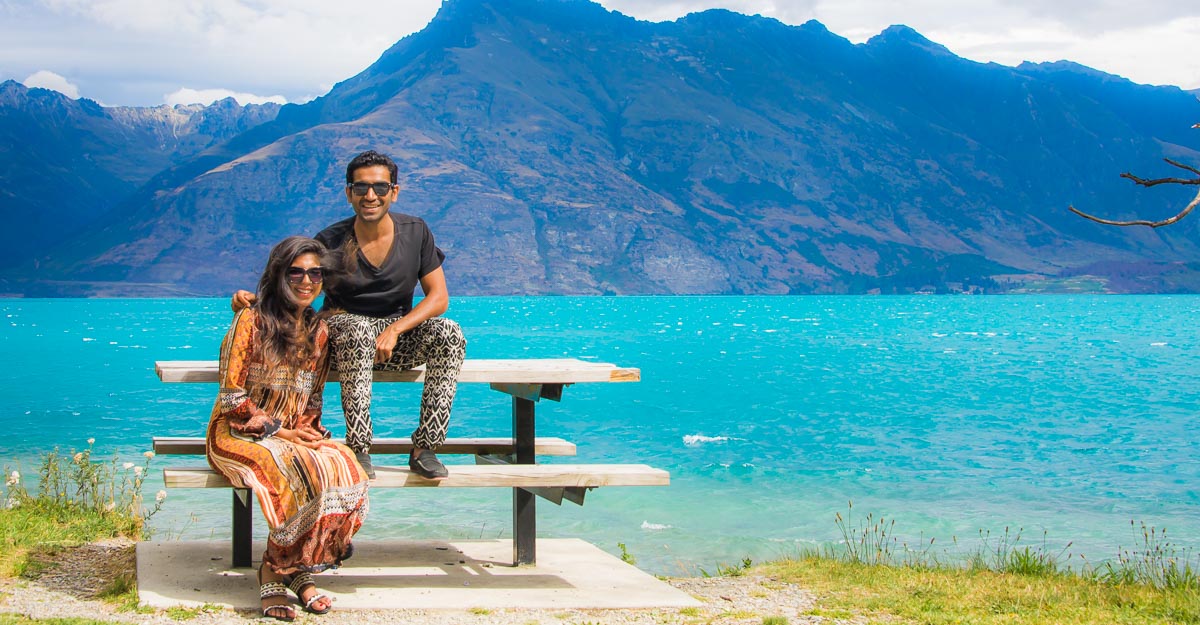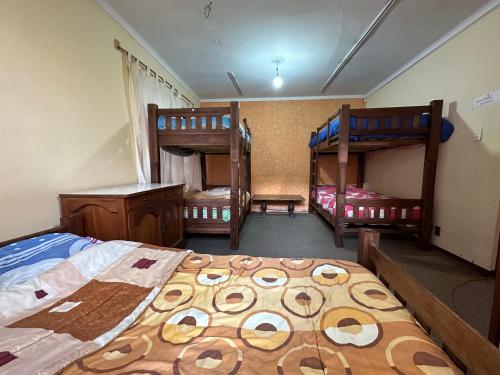Bolivia: The Ultimate Escape for Adventurous New Zealanders

I Cannot Believe It's Not New Zealand: A Brief Introduction to Bolivia
Similarities in Landscape and Adventure Opportunities
When you think of breathtaking landscapes and exhilarating adventures, New Zealand might come to mind immediately. However, Bolivia offers a remarkable array of similar experiences that are still waiting to be explored. With stunning mountains, vast salt flats, and lush rainforests, travellers will find that Bolivia is a treasure trove for nature enthusiasts and thrill-seekers alike.
- The Andes: Bolivia is home to a section of the majestic Andes mountain range. Here, hikers can tackle trails that reach staggering altitudes, offering panoramic views that rival any trek in New Zealand.
- Salar de Uyuni: As the world's largest salt flat, Salar de Uyuni is a must-visit. The surreal landscape creates stunning reflective surfaces that make for some of the most picturesque photographs imaginable—just like the their counterparts in New Zealand.
- Adventure Sports: From mountain biking down the infamous Death Road to white-water rafting in lush green valleys, the adventure opportunities are both thrilling and plentiful.
Contrasts in Culture and Cuisine
While Bolivia and New Zealand share awe-inspiring landscapes, their cultural tapestries and culinary offerings diverge significantly.
- Cultural Identity: Bolivia boasts a rich Indigenous heritage, with over 30 ethnic groups that contribute to diverse traditions and languages. In contrast to New Zealand’s Māori culture, Bolivian customs can be deeply rooted in ancient rituals and vibrant festivals.
- Culinary Differences: Bolivian cuisine reflects its agricultural roots, with staples like quinoa and potatoes. Dishes such as salteñas (savoury pastries) and llama meat offer a different gastronomic experience compared to New Zealand’s lamb and seafood.
This fascinating blend of adventure and cultural diversity makes Bolivia a unique destination. Whether you are scaling Andean peaks or sampling local delicacies, you will be constantly reminded of the incredible contrasts that define this vibrant nation.

Getting There: Flights and Visa Information
Direct Flight Options
As the excitement builds for your Bolivian adventure, it’s time to plan your journey. While direct flights from New Zealand to Bolivia are limited, there are several routing options that can take you there comfortably. Major cities like La Paz and Santa Cruz serve as the key entry points.
- Connecting Flights: Most travellers will find that connecting flights through larger international hubs, such as:
- Santiago (Chile)
- Buenos Aires (Argentina)
- Lima (Peru)
This routing allows you to enjoy a taste of another South American country before arriving in Bolivia. For example, a layover in Santiago could provide an opportunity to explore Chile's capital city before continuing your journey.
- Airlines: Several airlines operate these connecting flights, including:
- LATAM Airlines
- Avianca
- Copa Airlines
Be sure to check for the best deals and flight times that suit your itinerary.
Visa Requirements for New Zealanders
Before packing your bags, it's essential to understand visa regulations for New Zealanders travelling to Bolivia. Thankfully, the process is relatively straightforward.
- Visa on Arrival: New Zealand passport holders can obtain a tourist visa upon arrival in Bolivia, which is valid for up to 90 days.
- Documentation: To ensure a smooth entry, prepare the following:
- A valid passport with at least six months' validity remaining.
- A return ticket or proof of onward travel.
- An entry fee, which is commonly around $30–$50 USD, payable in cash.
- Health and Travel Insurance: While it's not a visa requirement, it's wise to have travel insurance that covers health emergencies, especially when trekking through the beautiful landscapes.
With these travel details in mind, you’re one step closer to immersing yourself in the wonders of Bolivia. Let the anticipation heighten as you prepare for an unforgettable journey filled with adventure and cultural exploration!
Unmissable Adventures in Bolivia
Climbing the Andean Peaks
Now that you’ve navigated your way into Bolivia, it’s time to think about the breathtaking adventures that await you. Perhaps the most exhilarating experience is climbing the Andean peaks, which offers both challenge and beauty.
- Popular Mountains:
- Huascarán: This majestic peak is known for its stunning views and thrilling climbing routes that cater to various skill levels.
- Illimani: Dominating the skyline of La Paz, Illimani features several routes that provide an unforgettable experience for mountaineers.
- What to Expect:
- Altitude: Be prepared for high altitudes; acclimatizing is crucial. It's not uncommon for climbers to spend a couple of days getting used to the elevation.
- Guided Tours: Hiring a local guide is highly recommended. They are not only skilled climbers but can also share insights about the indigenous cultures and ecosystems surrounding the peaks.
Taking in the panorama from the summit will undoubtedly be a highlight of your Bolivian adventure.
Exploring the Amazon Rainforest
After scaling the heights of the Andes, head towards the lush depths of the Amazon rainforest for an entirely different experience. The Bolivian Amazon is teeming with biodiversity and offers unique encounters that are sure to leave a lasting impression.
- Popular Destinations:
- Madidi National Park: A treasure trove of wildlife, you can spot everything from jaguars to colourful macaws.
- Rurrenabaque: This charming town is the gateway to rainforest adventures, offering easy access to guided tours.
- Activities:
- Wildlife Watching: Embark on treks with knowledgeable guides to observe rare species in their natural habitat.
- Cultural Experiences: Engage with local communities to learn about their customs and traditional practices.
Both the soaring Andes and the verdant Amazon present unique adventures that are deeply intertwined with Bolivia's rich natural heritage. With each step, you’ll find yourself captivated by the stunning contrasts this remarkable country has to offer. Prepare your camera—these are experiences you’ll want to cherish forever!

Bolivian Cuisine: A Taste of the Andes
Traditional Dishes to Try
As you embark on a culinary journey through Bolivia, be prepared to indulge in a rich tapestry of flavours that reflect the country's cultural heritage. Bolivian cuisine is a delightful blend of indigenous traditions and influences, offering various traditional dishes that you simply must try.
- Salteñas: These delicious baked pastries are filled with meat, potatoes, and spices, making for a hearty snack or meal. They are often enjoyed at breakfast or as a mid-morning treat, expertly crafted to be juicy inside with a flaky crust.
- Pique a lo Macho: A Bolivian classic, this dish consists of diced beef served over a bed of fried potatoes and topped with sausages, peppers, and a spicy sauce. It’s perfect for meat lovers and is often shared among friends in a communal setting.
- Sopa de Maní: This delicious peanut soup, enriched with vegetables and meat, is a comforting dish typical of many family kitchens. The rich flavour of peanuts gives it a unique character that warms the heart.
Popular Street Food Options
While exploring the bustling streets of cities like La Paz and Santa Cruz, don’t miss the opportunity to sample some local street food. These snacks are not only flavourful but also offer an authentic taste of daily life in Bolivia.
- Anticuchos: Grilled skewers of marinated beef heart, typically served with boiled potatoes. A popular street food option, they are often accompanied by spicy sauces that add a kick to each bite.
- Choclo con Queso: This simple yet satisfying dish consists of large Andean corn served with a slice of cheese. Look for street vendors grilling the corn to perfection; it's a popular snack loved by locals.
- Empanadas: These stuffed pastries can be found filled with a variety of ingredients, from meats to cheese. Whether sweet or savoury, they make for a delicious treat on the go.
Bolivian cuisine is an adventure in itself, offering a variety of flavours and experiences that you won’t want to miss. Each bite tells a story of tradition, community, and culture, inviting you to savour the essence of the Andes with every meal.

Cultural Immersion: Traditional Festivals and Local Customs
Festivals Celebrated Across the Country
As you soak in the vibrant culture of Bolivia, one of the best ways to truly immerse yourself is by participating in the local festivals. These celebrations provide a fascinating insight into the country’s rich traditions, with events that reflect its diverse cultural tapestry.
- Carnaval de Oruro: This UNESCO-recognized festival is one of the most famous in Bolivia, featuring elaborate costumes, dance performances, and colourful parades. Held in February, it attracts thousands of visitors eager to witness the blend of Indigenous and Spanish influences.
- Día de los Muertos: Celebrated in early November, this festival is a heartfelt tribute to loved ones who have passed away. Families create altars adorned with flowers, food, and photographs to honour the deceased, making it a unique opportunity to experience the depth of Bolivian spirituality.
- La Paz Gran Poder Festival: Held in June, this festival encapsulates the spirit of La Paz with parades showcasing traditional dances and costumes. It's an unmissable event for anyone interested in the country’s folklore and community spirit.
Etiquette Tips for New Zealanders
While immersing yourself in these vibrant celebrations, being aware of local customs can enhance your experience and show respect for Bolivian culture.
- Greetings: A warm smile and a friendly handshake are customary when meeting someone. If you encounter elders, a gentle nod or greeting in Quechua or Aymara can be a lovely touch.
- Dress Modestly: While you may be tempted to don bright outfits while participating in festivals, it's advisable to dress modestly when visiting local communities, especially in rural areas.
- Photography Etiquette: Always ask permission before taking photos of people, particularly during religious or cultural ceremonies. Many locals appreciate being asked, and it shows respect for their traditions.
By engaging respectfully with Bolivia’s rich cultural practices, you’ll find yourself warmly welcomed and shouldering the heart of this extraordinary nation. Embrace the local rhythms and festivities, and let Bolivia's culture enrich your journey in unforgettable ways!

Accommodation Options: From Budget Hostels to Luxury Resorts
Best Hostels for Backpackers
Travelling through Bolivia can be a budget-friendly endeavour, especially when it comes to accommodation. The country is dotted with hostels that cater to backpackers, combining affordability with a vibrant social atmosphere.
- Wild Rover Hostel (La Paz): A favourite among travellers, this hostel offers clean dorms and private rooms alongside lively common areas where you can meet fellow adventurers. With a bar, organized events, and a rooftop terrace boasting stunning views of the city, it’s the perfect place to unwind after a day of exploration.
- Hostel Elisabeth (Sucre): This charming hostel offers a cosy environment, complete with comfortable beds and an inviting garden. Sucre is known for its colonial architecture, and staying here places you right in the heart of it. Plus, the included breakfast and friendly staff add to the appeal.
- The Adventure Brew Hostel (Cochabamba): If you’re seeking more than just a place to sleep, this hostel is renowned for its microbrewery. You can enjoy craft beer on the rooftop terrace while mingling with other travellers, making it an excellent base for discovering the local area.
Luxury Resorts with Stunning Views
For those looking to indulge in a luxurious escape, Bolivia has a range of upscale accommodations where you can relax in style.
- Hotel Atix (La Paz): This stunning boutique hotel offers contemporary design and breathtaking views of the city and surrounding mountains. Each room is tastefully decorated, and the onsite restaurant serves exquisite local cuisine, creating a perfect setting for a memorable stay.
- Los Tajibos Hotel (Santa Cruz): A luxury oasis in the heart of the city, Los Tajibos features lush gardens, a massive pool, and elegantly designed rooms. It’s an ideal spot to unwind after a day of sightseeing, with an excellent spa for relaxation.
- Kachi Lodge (Salar de Uyuni): For a unique experience, consider staying at this luxury lodge made entirely of geodesic domes. Positioned on the surreal salt flats, guests can enjoy unparalleled stargazing and stunning sunrises, making it an unforgettable accommodation choice.
Whether you’re travelling on a shoestring budget or looking for a touch of luxury, Bolivia’s diverse range of accommodation options ensures that every traveller finds their ideal haven. Embrace the unique experiences offered by both hostels and resorts and let your Bolivian adventure unfold in comfort!

Budgeting for a Bolivian Adventure
Daily Expenses and Currency Exchange
When planning your Bolivian adventure, understanding daily expenses and currency exchange will help you manage your budget effectively. Bolivia is known for being one of the more affordable countries in South America, allowing travellers to stretch their dollars further.
- Average Daily Expenses:
- Accommodation: Dorm rooms in hostels can cost as little as $10–$15 USD per night, while mid-range hotels might range from $25–$70 USD.
- Food: Street food can be incredibly economical, with meals costing around $2–$5 USD. Dining at local restaurants generally costs between $7–$15 USD for a hearty meal.
- Transport: Local buses are very affordable, typically costing less than $1 USD for short rides, while long-distance buses might range from $10–$30 USD depending on the distance.
- Currency Exchange: The local currency is the boliviano (BOB). It’s advisable to exchange currency at ATMs or authorized exchange offices, as they usually offer better rates than hotels. Credit cards are accepted in larger establishments, but it’s a good idea to carry cash, especially in rural areas.
Tips for Saving Money while Exploring Bolivia
Travelling on a budget doesn’t mean compromising on experiences. Here are some handy tips to help you save while making the most of your trip:
- Eat Like a Local: Discover local markets where you can find inexpensive yet delicious meals. Dining where locals eat is not only more affordable, but it’s also a great way to experience authentic Bolivian cuisine.
- Use Public Transport: Opting for local buses or shared taxis is a great way to save money while getting around. Many cities offer inexpensive transportation options that also let you experience daily life in Bolivia.
- Free Walking Tours: Many cities, including La Paz and Sucre, offer free walking tours that provide valuable insight into local history and culture. Just remember to tip your guide!
- Bargain at Markets: Don’t be afraid to negotiate prices at local markets. Haggling is a cultural norm in Bolivia, and you might score a great deal on souvenirs or local crafts.
With thoughtful budgeting and a few savvy strategies, you’ll be well on your way to enjoying all the incredible experiences Bolivia has to offer without breaking the bank. Embrace the adventure and make the most of your Bolivian journey!
